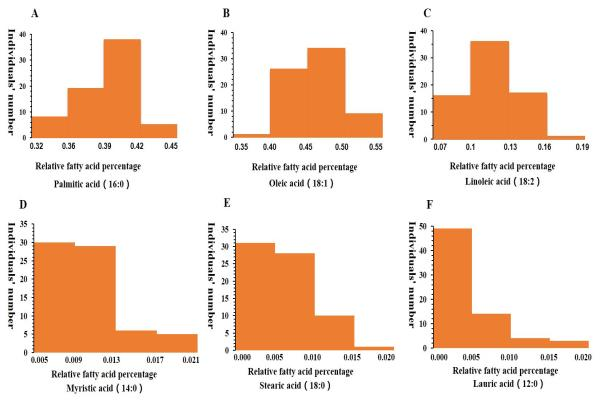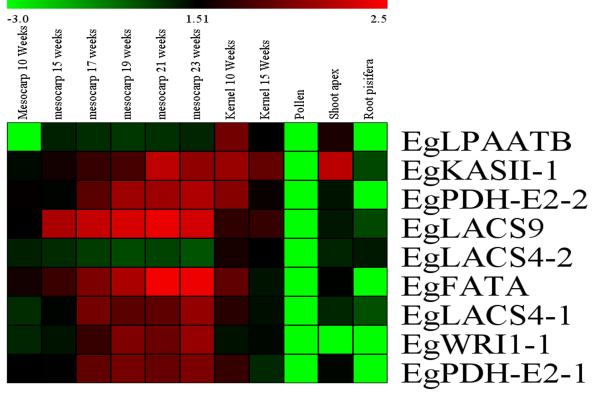Coconut Research Institute of Chinese Academy of Tropical Agricultural Sciences has made new progress in the exploration of candidate genes related to oil palm fatty acids through candidate gene association analysis. In this study, 52 genes associated with oil palm fatty acid synthesis and metabolism were identified through GO annotation of the oil palm genome. 225 pairs of IP (Intron Polymorphism) primers were designed based on intron polymorphism. Association analysis revealed that 13 IP markers were signifcantly associated with fatty acid content variation,. The development of these IP markers may be useful for genetic improvement of fatty acid composition in oil palm.
Oil palm is an important tropical woody oil crop and biomass energy forest. The main product of palm oil comes from the pulp (pericarp), and its components are mainly palmitic acid and oleic acid (about 1:1). With the increasing security of edible oil, people pay more and more attention to oleic acid, linoleic acid and other unsaturated fatty acids. The analysis of fatty acid components in natural population of oil palm showed that oleic acid content was significantly negatively correlated with palmitic acid (r=-0.53). This indicates that the decrease of palmitic acid content may lead to the increase of oleic acid content, palm oil as a quality edible oil is feasible. In this study, the association between intron polymorphism of related genes in oil palm population and phenotype variation of fatty acid component content was analyzed, and the candidate fatty acid-related genes, such as palmitic acid and linoleic acid, were extracted and quantitatively verified in different tissue parts such as mesocarp and kernel during different development stages. The results provide theoretical basis for increasing oleic acid and linoleic acid content and reducing palmitic acid content in oil palm breeding in the future.
Figure 1: Distribution frequency of pericarp fatty acids in 70 oil palm individuals
Figure 2: Heat maps of candidate gene expression in different tissues of oil palm
The results were published in the journal Frontiers in Plant Science (JCR1, IF=6.627) as a research paper entitled "Development of Intron Polymorphism Markers and Their Association With Fatty Acid Component Variation in Oil Palm". Jing Li, an assistant researcher at Coconut Research Institute of Chinese Academy of Tropical Agricultural Sciences, is the lead author of the paper, and Yong Xiao is the corresponding author. The research was funded by the National Natural Science Foundation Program of China.
Link:https://www.frontiersin.org/articles/10.3389/fpls.2022.885418/full


